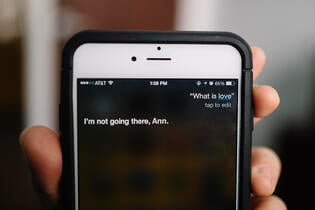Blog
5 Reasons Why My Heart Belongs to SAM!
by Ann Iverson, instructional designer

.png?width=1387&height=526&name=ann(250).png)
Mindful e-Learning Design
By Ann Iverson | March 24, 2014 | Custom Learning | 0 Comments
by Ann Iverson, instructional designer
“When the mind is trained to be fully attentive, even in the midst of chaos, we have the space to make more wise and conscious choices.”
-Janice Marturano
It was in the year 2000 when I reached a point in my career and personal life that I needed an intervention. I was stressed out, distracted and running in circles. Managing a business and two small children, I felt like a plate spinner at the circus. I did a fine job of managing multiple priorities, but life became overwhelming. I functioned continually in a reactive mode, paying only partial attention to clients, friends, and family. After a lengthy stint at the circus, I decided to visit my physician who, I thought, would prescribe a magic pill that could help me be the superwoman I needed to live an extraordinary life. Much to my displeasure, she responded to my plea with a prescription for a Mindfulness Based Stress Reduction (MBSR) class―eight weeks of learning how to pause and be present with everything around me. What? I felt cheated! Little did I know in that first session how much MBSR would transform me, my life, and my relationships.

Mindfulness has become more mainstream since then. People bring mindfulness to their everyday experiences, reporting significant improvements in innovation, awareness, communication, and even their eating habits. Scientific research now shows that mindfulness enhances mental health and improves performance in many fields of endeavor.
I recently read Finding the Space to Lead by Janice Marturano. As a vice president at General Mills, Janice discovered that mindfulness training taught her to find mental and emotional space in her life. She founded the Institute for Mindful Leadership in 2010, and now trains business leaders and employees from around the world. Janice states, “Mindfulness is a methodology that trains a capacity of your mind that generally receives little or no training.” She believes mindfulness training can strengthen four leadership fundamentals – focus, clarity, creativity, and compassion.
I believe these four fundamentals are also essential to the practice of e-learning design. For example, at Allen Interactions, we kick off our projects with a Savvy Start gathering, where our team meets with stakeholders to capture information that is essential to making good design decisions. Let’s take a look at how the four fundamentals can be applied at the Savvy Start:
Focus
At the Savvy Start, instructional designers gather information through an in-depth discussion that involves asking the right questions and listening with intention to stakeholder responses. This exchange usually means many moments of ambiguity, of not knowing the “answer” for a while. Mindfulness can help instructional designers remain focused in that space, helping them see clearly and respond to new ideas that surface without judgment or conditioned reactions.
Clarity
During the Savvy Start, instructional designers review key background information and generate initial e-learning design ideas with stakeholders. During this process, it’s tempting to make assumptions about what the client needs or the types of interactions that best suit the project. Mindfulness helps instructional designers pause to become aware if they’re creating a bias for action, leading stakeholders down a path rather than walking beside them.
Creativity
The Savvy Start is all about creativity, which often means applying proven methods in new and unique ways. Have you ever noticed that sometimes the most creative ideas appear when you step away from a task? It’s about creating space to let your mind come up with an innovative solution. Since you can’t step away from the Savvy Start, mindfulness can help find space in the constant stream of thoughts and ideas.
Compassion
The goal of the Savvy Start is to create an e-learning solution that promotes real performance change. Inspiring that change requires compassion because any type of change can cause anxiety and fear in learners. We naturally want to stay with what we know, even when it doesn’t work that well. Learners may feel invalidated with new performance expectations—that everything they’ve been doing before is wrong. Instructional designers can step in the learners’ shoes, connecting to their experience in a compassionate way, asking, “Is this a course I would like to experience?” and “How would I feel if I was taking this course?”
Mindfulness won’t remove the circus from your life, but it may help you find more balance as you walk the tightrope.
.png?width=135&height=135&name=Ann(250).png)
About the Author: Ann Iverson
Ann is an instructional designer for Allen Interactions who’s consulted for many years with a variety of clients, industries and projects. She learns best by making mistakes!
Comments
Would you like to leave a comment?
Related Blog Posts
.png?width=316&name=ann(250).png)
By: Ann Iverson | Apr, 2014
Category: Custom Learning, Strategic Consulting

Blog
Be an Advocate for Dumping the Information Dump
by Ann Iverson, instructional designer
By: Ann Iverson | Jul, 2014
Category: Custom Learning

Blog
Make a Learning Love Connection: Five FACTS for Better e-Learning Courses
by Ann Iverson, instructional designer
By: Ann Iverson | Feb, 2015
Category: Custom Learning

.png?width=120&height=120&name=ann(250).png)

